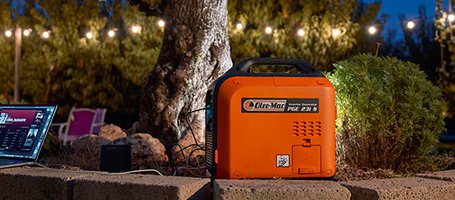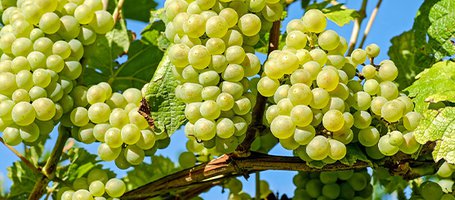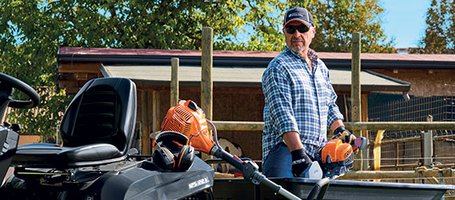Compost is the result of a decomposition (composting) process that transforms organic waste from the kitchen, garden and vegetable patch into a nutrient-rich substance that can be used for feeding and conditioning soil for the garden, flower beds, lawn, trees and shrubs or potted plants. A garden compost bin is essentially a container for collecting this household waste and accelerating its transformation into fertiliser. One variant is the earthworm composter.
Once you have chosen the best place to situate your compost bin, you can decide whether to buy one made from wood or plastic—they come in various shapes and sizes—or alternatively build your own compost bin. Read on to find out how.
Build a DIY compost bin
The best place for composting is a secluded spot away from the house and cultivated areas, somewhere humid but not wet, shielded from the wind and exposed to sunlight, although not in full sun, such as by a hedge or trees. If necessary, the area should be cleared of grass and vegetation (you can use a brushcutter to do that). The ground should be levelled so that the compost bin is stable and away from standing water in the event of rain.
The compost bin should be solidly constructed, with an open or vented bottom, and built in such a way that you can conveniently feed in the material to be composted, mix the waste to aerate it, water it during dry spells and, eventually, remove compost for your vegetable patch and garden once it has matured.
You can build your DIY garden compost bin out of recycled materials such as pallets, which can be used whole or dismantled into parts. After disassembling the pallets you can use the individual deck boards or the entire top deck (consisting of the deck boards and the stringers nailed to the back) for the walls and lid of the compost bin. To shorten the boards so that they fit your compost bin, you can cut them with a saw or chainsaw.
Pallets can also be used to raise the bottom of the compost bin off the ground and improve the flow of air, which together with humidity is an essential requisite for composting. Using whole pallets restricts you to a standard size, but they can be an excellent (and quick) solution if you have plenty of space.
Here is what you will need to build a DIY compost bin. Before getting down to work, decide on the measurements—which also depend on the space you have available—and draw up a simple design. Below are instructions for building a wooden compost bin with a parallelepiped shape, a width and depth of around 75 cm and a height of 80 cm:
-
Bricks for the raised base of the DIY compost bin.
-
Corner posts: 4 square wooden posts measuring 8x8x110 cm (around 30 cm will be buried in the ground to anchor the structure).
-
Walls of the compost bin: 20 wooden boards (5 per side) measuring 2.5x15x75 cm.
-
Sliding door: 1 wooden plank, 2.5x25x40 cm, 2 wooden battens, 3x3x35 cm, 2 wooden crosspieces, 2.5x10x80 cm.
-
Lid: 4 boards measuring 2.5x15x75 cm, 2 crosspieces measuring 2.5x10x65 cm.
-
Hardware: screws for fixing the boards to the posts and crosspieces, 2 metal C-channels for the sliding door, screws for fixing the C-channels to the battens.
How can you effortlessly transport all the wood and equipment you need to prepare your compost bin? Using a transporter, which really is a must when you have a long distance to travel, perhaps to the top of a hill or across undulating terrain.
Start by hammering the four corner posts into the ground: they will form the main framework of your compost bin. Before doing that, it is a good idea to seal the buried section of each post using tar.
The compost bin should be raised off the ground: after planting the posts, create a base inside its perimeter by arranging bricks in a grid pattern on the ground, with sufficient space between them to enable air to circulate.
Build the walls of your DIY compost bin by screwing boards horizontally to the posts on each wall. You’ll need 5 boards per wall. Leave a gap between the boards for ventilation (enough to poke one finger through).
For the front wall, build a door that slides up and down, allowing you to extract the ready-to-use compost. Assemble the wall before fixing it to the posts:
-
Cut the two lowest horizontal boards so that, once they are fixed to the posts, there will be an opening 25 cm wide in the middle.
-
Attach the connecting crosspieces vertically using screws to all the boards, including to the inside ends of the shortened boards, to help reinforce the wall structure.
-
Attach the battens to the front of the wall, on either side of the door opening.
-
Screw the metal C-channels to the inside of the battens. This will form the guide rail for the sliding door.
Finally build the lid of your compost bin: simply use boards fastened across the back with crosspieces using screws.


How your DIY compost bin works
Your DIY compost bin is ready: now it needs be filled with a mixture of organic waste that is rich in carbon and nitrogen. Carbon-rich waste includes pruned branches and twigs from trees and shrubs, pruning debris created by a hedgetrimmer, dry leaves collected with a blower and waste vegetation from cleaning the garden before tilling it with a rotary tiller. Nitrogen-rich waste tends to be green and/or moist, including kitchen scraps and grass clippings collected by a lawnmower.
But what happens inside the compost bin? The activity of microorganisms causes the waste to decompose and its temperature rises to 55-60°C (which destroys pathogens and weeds). At a certain point, once the most biodegradable part of the waste has been broken down, its temperature gradually falls and the compost maturation process begins. At this stage the material stabilises, leading to the formation of humic substances that are essential for making soil fertile (i.e. easier to work, more moisture retentive, rich in nutrients, etc.) and for nourishing plants.
Talking of DIY garden compost, which makes a great fertiliser when tilling soil, here you will find a summary of the steps for growing vegetables. Use mature compost for mulching, which is useful both in summer (to help soil retain moisture, here’s what you should do in the vegetable patch before going on holiday) and in winter (to protect the vegetable patch, flower beds, tree roots and shrubs from temperature fluctuations and frost).









